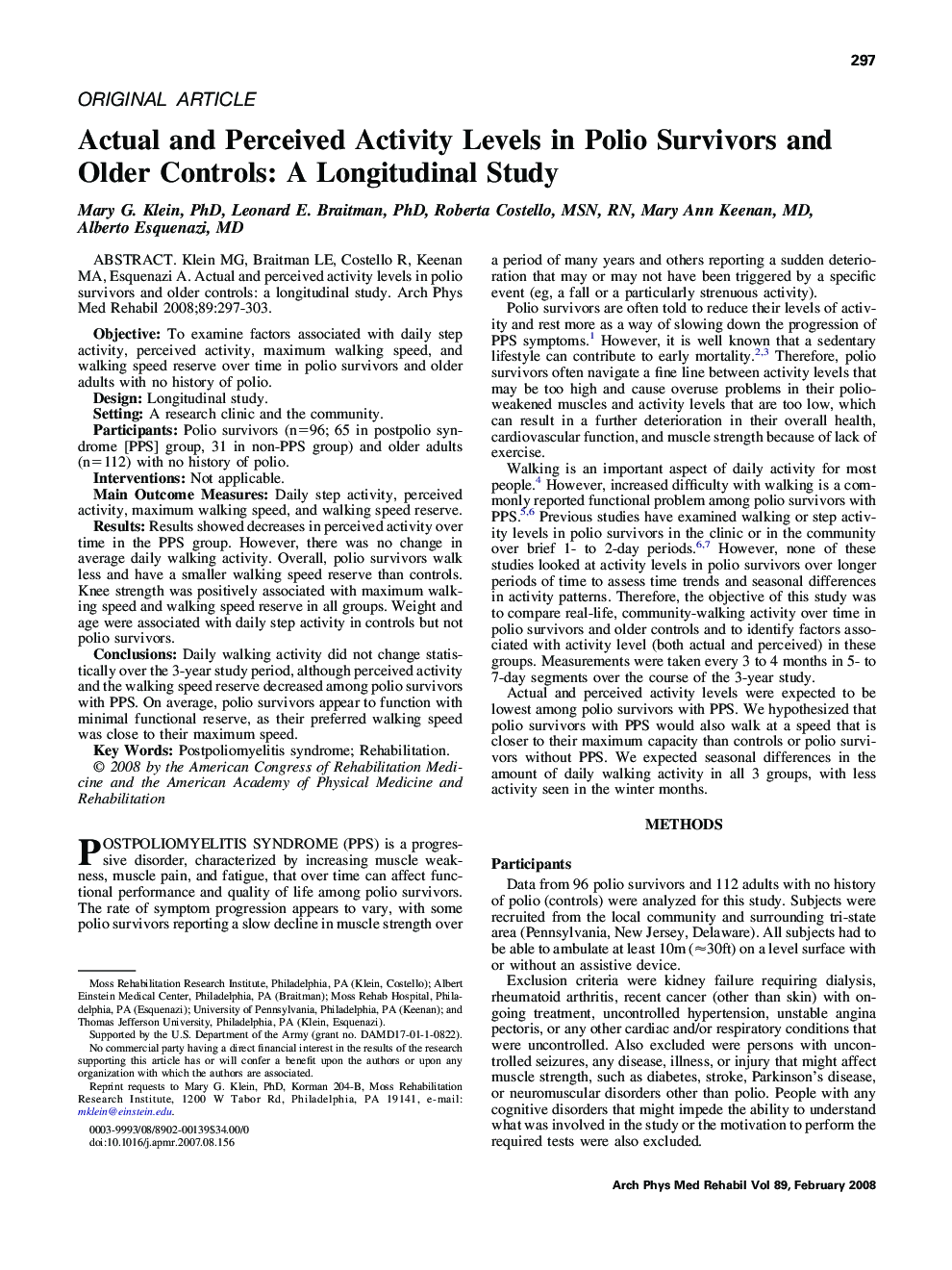| Article ID | Journal | Published Year | Pages | File Type |
|---|---|---|---|---|
| 3452042 | Archives of Physical Medicine and Rehabilitation | 2008 | 7 Pages |
Klein MG, Braitman LE, Costello R, Keenan MA, Esquenazi A. Actual and perceived activity levels in polio survivors and older controls: a longitudinal study.ObjectiveTo examine factors associated with daily step activity, perceived activity, maximum walking speed, and walking speed reserve over time in polio survivors and older adults with no history of polio.DesignLongitudinal study.SettingA research clinic and the community.ParticipantsPolio survivors (n=96; 65 in postpolio syndrome [PPS] group, 31 in non-PPS group) and older adults (n=112) with no history of polio.InterventionsNot applicable.Main Outcome MeasuresDaily step activity, perceived activity, maximum walking speed, and walking speed reserve.ResultsResults showed decreases in perceived activity over time in the PPS group. However, there was no change in average daily walking activity. Overall, polio survivors walk less and have a smaller walking speed reserve than controls. Knee strength was positively associated with maximum walking speed and walking speed reserve in all groups. Weight and age were associated with daily step activity in controls but not polio survivors.ConclusionsDaily walking activity did not change statistically over the 3-year study period, although perceived activity and the walking speed reserve decreased among polio survivors with PPS. On average, polio survivors appear to function with minimal functional reserve, as their preferred walking speed was close to their maximum speed.
